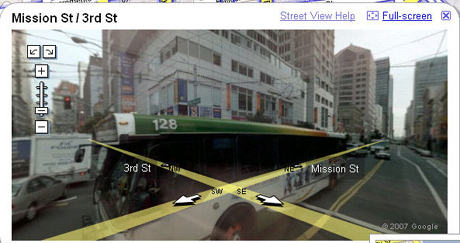I have an RFID-enabled idea to help the mobility-impaired

First, let me set the scene.
Last Thursday, I was walking down Third Street in downtown San Francisco. Crossing busy Mission Street (above, v ia Google Maps' StreetView) the green light was on a 30-second timer.
For most of us, the 30-second duration gave us more than enough time to cross Mission from the north to the south side of the busy arterial.
Still, I happened to notice a senior citizen with a cane. When the 30 seconds elapsed, she was barely over the median.
I estimated she was 60% of the way across. Plainly, she could have used 20 more seconds of green light to reach her destination.
It's then that a brainstorm hit me.
What if technology was available that would enable the mobility-challenged and those without the gift of vision to signal a traffic signal that they need more time to navigate the crosswalk?
Here's how this would work.
Social service agencies, hospitals, clinics, etc. would be given bar-code strips that could be placed on the walkers, canes, or even clothing of the mobility-challenged.
An RFID chip in the traffic-signal mechanism would be installed that would be capable of picking up these signals.
When a mobility-challenged individual approaches a traffic signal thus equipped, 15,30, or whatever an appropriate allotment of extra time might be- could be added to the duration of the next green light where the person is attempting to cross.
Obviously there could be potential for theft of these strips, and attendant traffic havoc. But I think this could be ameliorated somewhat by the user being given a PIN, and making a daily phone call to a number that would electronically instruct the city's traffic signals to accept a signal from such a user for that day?
While I haven't yet cost-ed out how much this enabling technology would run, I believe there's a moral justification to be made here.
Do you agree?
